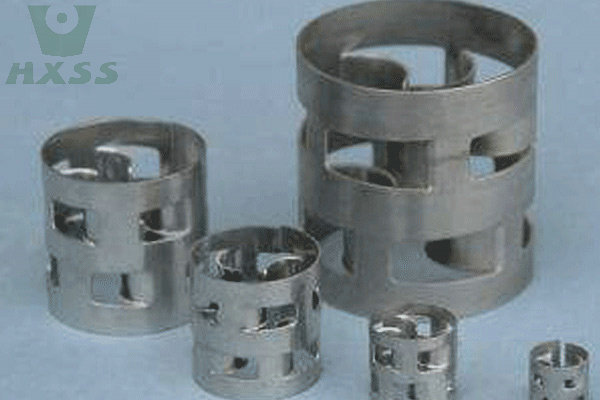What Is Cr Steel? What Is the Chemical Composition?
Cr steel is a high carbon, low alloy tool steel, and low hardenability steel. The steel has high hardness, high toughness, and good wire-cutting performance. The characteristics of this type of steel are few alloy elements, low tempering resistance, shallow hardened layer, and thus low load-bearing capacity. Preheating should be done before repair welding, and slow-controlled cooling should be done after welding.
The chemical composition of the steel (mass fraction): C0.95% ~ 1.10%, Mn ≤ 0.40%, Si ≤ 0.35%, P ≤ 0.03%, S ≤ 0.03%, Cr 0.75% ~1.05%
Cr steel is also a relatively common steel, such as Cr12 This type of steel belongs to the alloy tool steel, hardenability, hardness, and wear resistance are higher than the carbon tool steel Heat treatment after the dimensional change is not very big. Mainly used for gauges, samples, wrenches, gauges, and the like.
The following list of Cr2 and Cr12 composition: C: 0.95-1.1 Si: less than or equal to 0.40 Mn: less than or equal to 0.40 S: less than or equal to 0.30 P: less than or equal to 0.30 Cr: 1.3-1.65 Cr12: C: 2.0-2.3 Si: less than or equal to 0.40 Mn: less than or equal to 0.40 S: less than or equal to 0.30 P: less than or equal to 0.30 Cr: 11.0-2.3 Si: less than or equal to 0.30 S: less than or equal to 0.30 S: less than or equal to 0.30 P: less than or equal to 0.30 Cr: less than or equal to 0.30 Equal to 0.30 Cr:11.5-13
What Kind Of Steel Is 40Cr?
40Cr alloy structural steel
40Cr Steel Properties
40Cr steel for medium hardenability tempered steel, is one of the more widely used alloy structural steel grades in machinery manufacturing. 40Cr steel has good hardenability, in water quenching can be quenched to a diameter of 28 ~ 60mm, oil quenching can be quenched to a diameter of 15 ~ 40mm. 40Cr steel after tempering treatment has good overall mechanical properties and has a good low-notch sensitivity and low-temperature impact toughness. 40Cr steel after tempering treatment, often also surface high-frequency quenching or nitriding treatment.
When the hardness is 174~229HBS, the cutting performance is better, and the relative cutting and machining is 60%. 40Cr steel tensile strength, yield strength, and hardenability are higher than 40 steel, but the weldability is limited, and there is a tendency to form Cracks. In order to save Cr, under certain conditions, 40MnB, 45MnB, 35SiMn, 42SiMn, 40MnVB, 42MnV, 40MnMoB, 40MnWB, and other steels can be used instead of 40Cr steel to manufacture the corresponding parts.
40Cr Steel Executive Standard
GB/T 3077-1999
40Cr Steel Standard Comparison
German DIN standard material number 1.17035/1.7045, German DIN standard steel number 41Cr4/42Gr4, British EN standard steel number 18, British BS standard steel number 41Cr4, French AFNOR standard steel number 42C4, French NF standard steel number 38Cr4/41Cr4, Italian UNI standard steel number 41Cr4, Belgian NBN Standard steel number 42Cr4, Swedish SS standard steel number 2245,
American AISI/SAE/ASTM standard steel number 5140, Japanese JIS standard steel number SCr440(H)/SCr440, American AISI/SAE/ASTM standard steel number 5140, International Organization for Standardization ISO standard steel number 41Cr4.
40Cr Steel Chemical Composition
Carbon C: 0.37~0.44;
Silicon Si: 0.17~0.37;
Manganese Mn: 0.50 ~ 0.80;
Sulfur S: allow residual content ≤ 0.035;
Phosphorus P: allowed residual content ≤ 0.035;
Chromium Cr: 0.80~1.10;
Nickel Ni: ≤0.30;
Copper Cu: allow residual content ≤ 0.030
40Cr heat treatment specification:
Quenching 850 ℃, oil-cooled; tempering 520 ℃, water-cooled, oil-cooled.
40Cr mechanical properties:
Tensile strength (b/MPa): ≥980
Yield point (s/MPa): ≥ 785
Elongation at break (5/%): ≥ 9
Section shrinkage (/ %): ≥ 45
Impact work (impact value) (Akv/J): ≥47
Brinell hardness (HBS 100/3000) (annealed or high-temperature tempered state): ≤ 207
40Cr Steel Applications
40Cr Steel is commonly used alloy tempered structural steel, used in the manufacture of mechanical parts subjected to medium load and medium speed working conditions, such as automotive steering knuckle, rear half shaft, machine tools, gears, shafts, worm gears, spline shafts, top sets, etc.; can also be tempered and high-frequency quenching can be used in the manufacture of high surface hardness and abrasion resistance without the large impact of the parts, such as gears, bushings, axles, shafts, spindle, Crankshafts, arbor, pins, connecting rods, sCrews, inlet sCrews, and so on.

The steel can also be quenched, medium temperature or low-temperature tempering, manufacture of heavy load-bearing parts; and is suitable for the manufacture of carbonitriding treatment of a variety of transmission parts, such as the larger diameter and requirements of low-temperature toughness of gears and shafts.
In 40Cr steel carburizing steel, Mo has a variety of outstanding roles.
For example, it greatly improves the hardenability of parts carburized layer and heart, is conducive to expanding the use of size and control of quenching deformation; significantly inhibits the formation of bainite in the carburized layer, is conducive to obtaining the full martensite organization; it makes the carburized layer in the wider range of carbon content to get a higher hardness, is conducive to hardening the quality of the layer is stable; it can inhibit carburized surface oxidation, and so on.
This improves the carburized layer of impact fracture stress and overload plus fatigue resistance. Therefore, the important use and high-quality requirements of carburized steel generally contain a certain amount of molybdenum, especially for heavy-duty large carburized parts. In addition, molybdenum also accelerates the role of 40Cr steel annealing softening, which is conducive to improving the cutting and machining.
40Cr Main Specifications
40Cr round bar, 40Cr rolled bar, 40Cr forged bar, 40Cr forgings, 40Cr forged ring, 40Cr plate, 40Cr pipe
